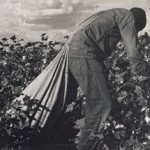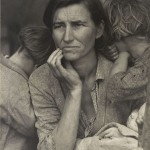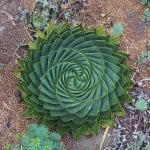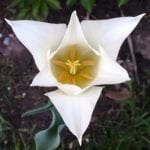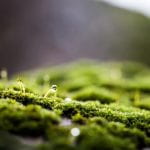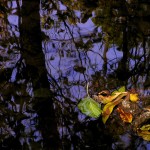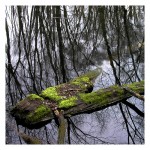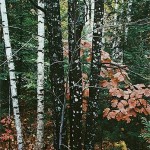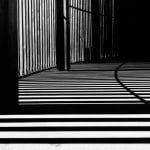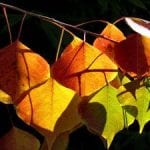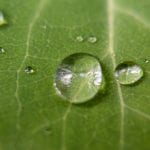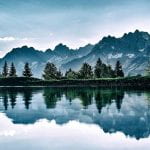Final – Due Tuesday before class is over
Category Archives: Photography 1 Assignments
Assignments May 12-15
Documentary Photography Project – Due Tuesday
If you can’t get it to post to your blog you will have to email the completed project to me, kanglin@district70.org
You will present/show your project in class during finals
Create an Adobe Express presentation with the following included: at least 6 photos that you took, 6 other photos (can be photos you took, if from the internet or magazine you must include the photographers name), titles for each photo, voice over telling the story, music, transitions, creativity in telling the story.
You will be graded on photo quality and having 12 photos (70 points), having the photographer authors (20 points), titles (10 points), story in voice over and shown in photos (40 points), creativity (10 points).
Scavenger Hunt – Due Thursday before class is over
Rules will be passed out during class Wednesday.
Assignments April 28-May 1
Documentary Photography
Students consider the function of social-documentary photography. They will research Dorothea Lange’s documentary projects, and create their own photo essay about a subject of interest to them. Students will document an area of struggle in their life or take on a struggle to document within their community. We will watch this video on photojournalism and this video on Colorado Women Taking on Hunger and discuss the different types of documentary photography and what it is. Here are some tips on taking documentary photography. Here are two examples of student projects.
Social Documentary and Dorthea Lange – Due Tuesday
First we will look at the photographs below from Dorthea Lange and discuss those. Dorothea Lange and more on Dorothea Lange
Research the term “social documentary” and draft a definition. Also research two related terms currently in use by artists, art historians, and art critics: “concerned photography” and “compassionate photography.” Write out your definition and explain. Also research on the Internet three images by Lange that were part of social-documentary projects she undertook (for example, additional photographs she took while working for the Farm Security Administration). Include those three photographs and what you learned about her documentary photography. Title the post “Dorthea Lange Writing.”
Choose Topic – Due Tuesday before class is over
Choose and research a topic of struggle in your life or take on a struggle to document within your community that will be the subject of your own social-documentary project, presented in the form of a photo essay (a series of related photographs focusing on a specific topic that is intended to be viewed collectively, often with captions).
The photo essay was popularized by Lange and other photographers during the 1930s. Photo essays by Lange were published in various magazines and reports from the 1930s to the 1960s. What is the difference between a photo essay and a single photograph about the same topic? What can a photo essay do that a single photograph cannot? Why is photography especially well suited for the essay format?
Students discuss topics for their photo essays and brainstorm ideas for how to visually express them. Students also brainstorm interview questions for individuals they may photograph as part of the project.
Storyboard – Due Next Monday before class is over
Write a plan summarizing the key story you hope to tell in your photo essay and strategies for doing so, keeping in mind your definition of “social documentary.” Using the storyboard ideas below, brainstorm and create your story. You will include at least 6 photos of your own and 6 more photos that can be from the internet, magazines, or drawings (include who the photographer was). Upload to your blog as your topic and include your plan. Title the post “Documentary Photography Topic.” This should be a direct post, not a Word attachment.
Adobe Express Tutorial – Due Next Monday before class is over
We will go over how to use Adobe Express in class. When we’re done you will submit your tutorial.
Documentary Photography Project – Due Next Thursday
If you can’t get it to post to your blog you will have to email the completed project to me, kanglin@district70.org
You will present/show your project in class during finals
Create an Adobe Express presentation with the following included: at least 6 photos that you took, 6 other photos (can be photos you took, if from the internet or magazine you must include the photographers name), titles for each photo, voice over telling the story, music, transitions, creativity in telling the story.
You will be graded on photo quality and having 12 photos (70 points), having the photographer authors (20 points), titles (10 points), story in voice over and shown in photos (40 points), creativity (10 points).
Assignments April 21-24
- Impact of Photography – Due Thursday before class over
We will watch the movie Flags of Our Fathers, as we are watching the movie you will fill out the worksheet. Make sure that you answer all of the questions and put in the box before class is over on Thursday.
If you did not watch the movie Flags of Our Fathers with us, you need to find three different photos that have impacted the world, country, or nation, and explain the importance of the photograph and the importance of photography (include the photos in your post and name the photographer). You can use this website. You will be graded on ideas and content and conventions. This should be five paragraphs. Title the post “Impact of Photography.” This should be posted in your blog, not a Word document.
Assignments April 14-17
- Triangles in Nature – Due Thursday before class is over
Find and take photographs in nature that resemble triangles. You will upload your best four photos to your blog with titles in a gallery 2×2. Title the blog post “Triangles in Nature.” Include titles in the caption for each image. Examples are below.
- Shoot Up and Down – Due Thursday
Take photographs of nature from a worm’s eye viewpoint and a bird’s eye viewpoint. make sure you pay attention to the lighting and background. Submit your best two of each viewpoint in a gallery 2×2 with titles in the caption and title the blog post “Shoot Up and Down.” Below are examples.
Assignments April 7-10
- Comments 5 – Due Monday before class is over
Comment on your favorite four photos from the photo 1 photos or advanced photos from last week’s assignments. Please go through different student’s work to view more than four. Your comments need to include the photography and art language that we have talked about so far. This is not a one-word or one-sentence comment. Take your time and think about the other person’s work, what spoke to you, what did you like, what could be included to make the photo more dynamic, etc. Make sure that your comments are thought-provoking and helpful. Type out your comments on four of your favorite photos on the blog. Then, in Microsoft Word, copy each of your comments and the photo that you commented on, include the photographer’s name and upload your Word document to your blog as Comments 5.
- Up Close and Detail Landscape Photos – Due Thursday before class is over
Watch the video about up close and details of landscapes. Photograph a small detail of the landscape, a tree, a waterfall, or even a leaf. Or, try a close-up view of a bigger subject like a hillside. Your photographs should have a large depth of field with most of the scene in focus. You will edit (crop out unwanted backgrounds, change colors, etc) and upload your best 6 photos to your blog, title the post “Up Close and Detail Landscape Photos.” 3×2 gallery, title the photos in the caption.
-
- Zoo Photos – Due Thursday before class is over
While at the zoo, think about different viewpoints, close-ups, angles, and more. These images can range from full-body shots to headshots. You can choose to show the entire animal about its zoo environment, which can resemble its natural environment, or you can closely frame the animal’s head, turning the image into an informal portrait. Take a lot of photographs so that you can decide which your best 6 photos are. Edit and upload the best 6 to your blog and name the post “Zoo Photos.” Put it in a gallery 3×2 and caption each image.
Read the article and watch the video to get ideas about taking zoo photos artistically.
Tips for taking zoo photos and Zoo_Photos
Alternative Assignment – Due Thursday before class is over
If you don’t go to the zoo, you need to complete the following assignment
Find six different zoo photos that have different viewpoints/angles. Write about the viewpoints/angles and how you would be able to get this type of photo if you visited the zoo. This should be a paragraph for each photo. Do not turn it in as a Word document, please add the photos to your blog post. You will be graded on content and word choice. Blog posts should be named “Zoo Writing,” make sure that you give credit to the photographer.
Assignments March 31-April 6
-
- Is Photography Art – Due Monday before class is over
Using this website, (or any other sites) think about what makes a photo good, why are some photographs better than others, what is the difference between fine art and snapshots? Write a paragraph answering these questions and decide your opinion what makes or doesn’t make photography an art. Also, find two photos that you think are good and two photos that you think are bad and explain what makes them good and what makes them bad. You will be graded on content and conventions. Title your blog post “Is Photography Art.”
Lighting: Due Thursday Before Class is Over
Take photos to show the use of lighting. You will edit and post to your blog your best 6 photos. Title the blog post “Lighting.” Make sure to put this in a gallery of 3×2 and title each photo in the caption area. Below are some examples.
- Grand Landscape – Due Thursday before class is over
We will watch a video on how to think artistically while taking landscapes, then we will watch a video on grand landscape. We will take photographs of the Grand Landscape. Create Grand Landscape photographs that include the sky. Most, or all, of the scene should be in focus. Use the Rule of Thirds to compose the images, placing the horizon on the upper line in one variation and on the lower line in another. Depending on which line you use, this is a way to shift the emphasis from the land to the sky or vice versa. You will upload your best 4 photos to your blog on Thursday after you have edited the photos. Crop out any unwanted background information, change the colors (upload at least one photo in black and white), and use any other editing to help the emphasis and focus of the photo. Your blog post will be titled “Grand Landscape Photos.” Gallery, 2×2.
Assignments March 17-20
- Comments 4 – Due Monday before class is over
Comment on your favorite four photos from the photo 1 photos or advanced photos from last weeks assignments. Please go through different student’s work to view more than four. Your comments need to include the photography and art language that we have talked about so far. This is not a one word or one sentence comment. Take your time and think about the other person’s work, what spoke to you, what did you like, what could be included to make the photo more dynamic, etc. Make sure that your comments are thought provoking and helpful. Type out your comments on four of your favorite photos on the blog. Then in Microsoft Word, copy each of your comments and the photo that you commented on, include the photographers name, and upload your word document to your blog as Comments 4
- Depth of Field – Due Tuesday before class is over
-Read this link to help understand depth of field and how to control it in your shots. We will go over this link in class as well.
– Then go outside and take two photographs of the same subject, trying to get two different depth of fields. You will set the camera mode to AV (aperture priority). Make sure to focus on the same subject for both shots you take.
-In Photo #1 You will get a shallow depth of field. Zoom out to the longest focal length of the lens which is 55mm. Set the aperture on f5.6 (the widest aperture at 55mm) and take note of what the camera sets the shutter speed at. Make sure it is not below 60th of a second. Get in good and close to your subject
-In Photo #2 You will get a good depth of field. Put your lens at 18mm (which is the widest lens mm on your lens). Set your aperture at f16, and take note of what the camera sets the shutter speed at. Make sure it is not below 60th of a second, or open up the aperture to f11. Stay a bit further back to get a better depth of field.
You will upload the two photographs in a gallery 2×1, title each photo the corresponding depth of field. The blog post should be titled “Depth of Field.” Below is an example.
- Macro Mode Images – Due Thursday before class is over
Using this website, we will discuss the differences between Macro and Micro Photography and then you will take your own photos to show different varieties in macro images. You can find interesting shapes and patterns and abstract your image, or you can find plants, bugs, toys, food, or any other subject and make your image seem larger than life. You will upload your best 6 photos to your blog with titles in a gallery 3×2 by Wednesday.
Assignments March 10-13
-
- Communication in Photography – Due Monday before class is over
Choose one of the following images to answer this question: What is this image trying to communicate? This should be a paragraph. Include the image in your post. Write in complete sentences. Title your blog post “Communication in Photography.”
-
- Phoetry – Due Wednesday before class is over
Phoetry is the combination of poetry and photography. Poetry is sometimes hard to understand. Digital photography can help make abstract poems more concrete. You will illustrate a poem with pictures. Select a short poem, type up your poem and separate them into stanzas in Powerpoint; each stanza would be a separate slide. You will go out and take photos to illustrate the words for each stanza. Change the font for the poem to go along with the words or the photos that you choose. This will be due on Wednesday before class is over. Please name the blog post “Phoetry.”
- Still Life Toy Photographs – DUE Thursday
We will look at the examples. It’s interesting to photograph still life subjects using unexpected approaches. This takes an object out of its normal context, so that you can see it in a different light. In this case, you’re going to make a formal portrait of a toy. You will upload your best 6 photos by Wednesday before class is over, with titles, in a gallery 3×2. Title your blog post “Toy Photos.” Before you begin think about the following:
- Do you want to convey the significance that a plaything from your childhood has for you, or will you choose a random toy and portray it in unexpected ways?
- Consider the portrait’s background. Will it provide context, color, and visual interest or will it be a neutral setting that highlights the subject?
- As you compose your image, experiment with lighting, viewpoint, balance, and emphasis to reveal the toy’s story.
Assignments March 3-6
- Still Life Writing – Due Monday before class is over
We will watch a video on Still_Life_Thinking_Artistically (1), Tips for taking Still Life and Still_Life_Objects
Find three different still life photos and explain how unity and variety play a part in the overall look of the photo. Also, explain the viewpoint and what you think about each photo. The writing portion will be posted to your blog below your gallery. Make sure to include the photos in a gallery 3×1 and in the caption include who the photographer is. Add your writing to your blog post as “Still Life Writing.”
- Still Life Object Photos – Due Tuesday before class is over
The Lab. We will take photos together like this in class. In a group you will each use the same camera to take a photo at the station you are assigned. Each photo needs to be different. One person in the group will upload the photos to their blog. Title each image with the photographers name. Title your blog post as “Still Life Object.”
- Still Life Photos – Due Thursday before class is over
You will choose objects that interest you. Don’t feel you have to assemble still lifes like others you’ve seen. Instead, look around for objects you feel comfortable with, or objects you dislike. Consider objects you barely even notice. How do they look with other objects? What happens when a bright light hits them? Look for the unexpected, and give it meaning through your photographs. You should bring items into class that you want to photograph. Make sure that you pay attention to the backgrounds when you are photographing. You will upload you best 6 photos to your blog by Thursday with titles, 3×2 gallery, title post “Still Life Photos.”
